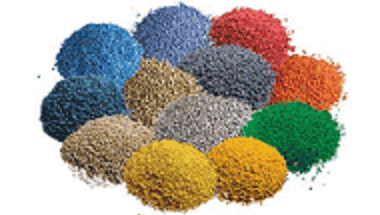Adding color to a plastic product can be a complex task. Even if you are completely familiar with plastic products colored in numerous tonalities, hues, or effects, this process demands several key steps. One of them is the colorant selection process.

Image Credit: AIMPLAS
The selection of a colorant is dependent on several factors, which can be divided into two groups: the plastic to be colored and the final application.
Some elements must be taken into account when considering plastics, such as the melt flow rate, transparency, melt or processing temperature, whether the plastic is semi-crystalline or amorphous, whether it is glossy or matte, and whether it contains filler additives or fiber.
Colorants can be pigments (organic or inorganic) or dyes. Dyes are soluble in plastic, making them easily mixable. They are commonly used to color transparent plastics, typically amorphous polyesters. Pigments are either partially soluble (organic) or insoluble (inorganic). Partially soluble pigments can be used to color transparent plastics. Both dyes and organic pigments have a solid ability to migrate versus inorganic pigments. The main characteristic of inorganic pigments is that they are helpful in coloring any type of plastic requiring high opacity.
Organic pigments are more effective than inorganic ones in terms of tinting capacity or coloring strength. They create brighter and glossier colors at lower percentages, 0.2-0.5%, as opposed to 2%.
When the final application is considered, the choice of colorant is dependent on the durability of the colored product, its final price, environmental factors such as UV radiation, use temperature, aggressive chemical environments, or possible migrations.
In coloring terminology, there is a reference to different resistances to specific phenomena that impact performance. These resistances affecting the selection process are known as fastness. We can find:
- Lightfastness, or the persistence of color after being subject to a specified quantity of UV radiation.
- Chemical fastness, or the resistance of the color in aggressive chemical environments, whether acids or basics.
- Thermal fastness, or the color’s resistance to temperature, in particular during the processing.
- Migration fastness, or the amount of some organic pigments or dyes that can migrate or be extracted from plastic. The level of fastness indicates the difficulty of pigment migration.
Other key elements are pigment dispersibility, any number of special characteristics the pigment and its format contain, chemical plastic-pigment compatibility, and availability, whether in a masterbatch, powder, or liquid.

This information has been sourced, reviewed and adapted from materials provided by AIMPLAS.
For more information on this source, please visit AIMPLAS.